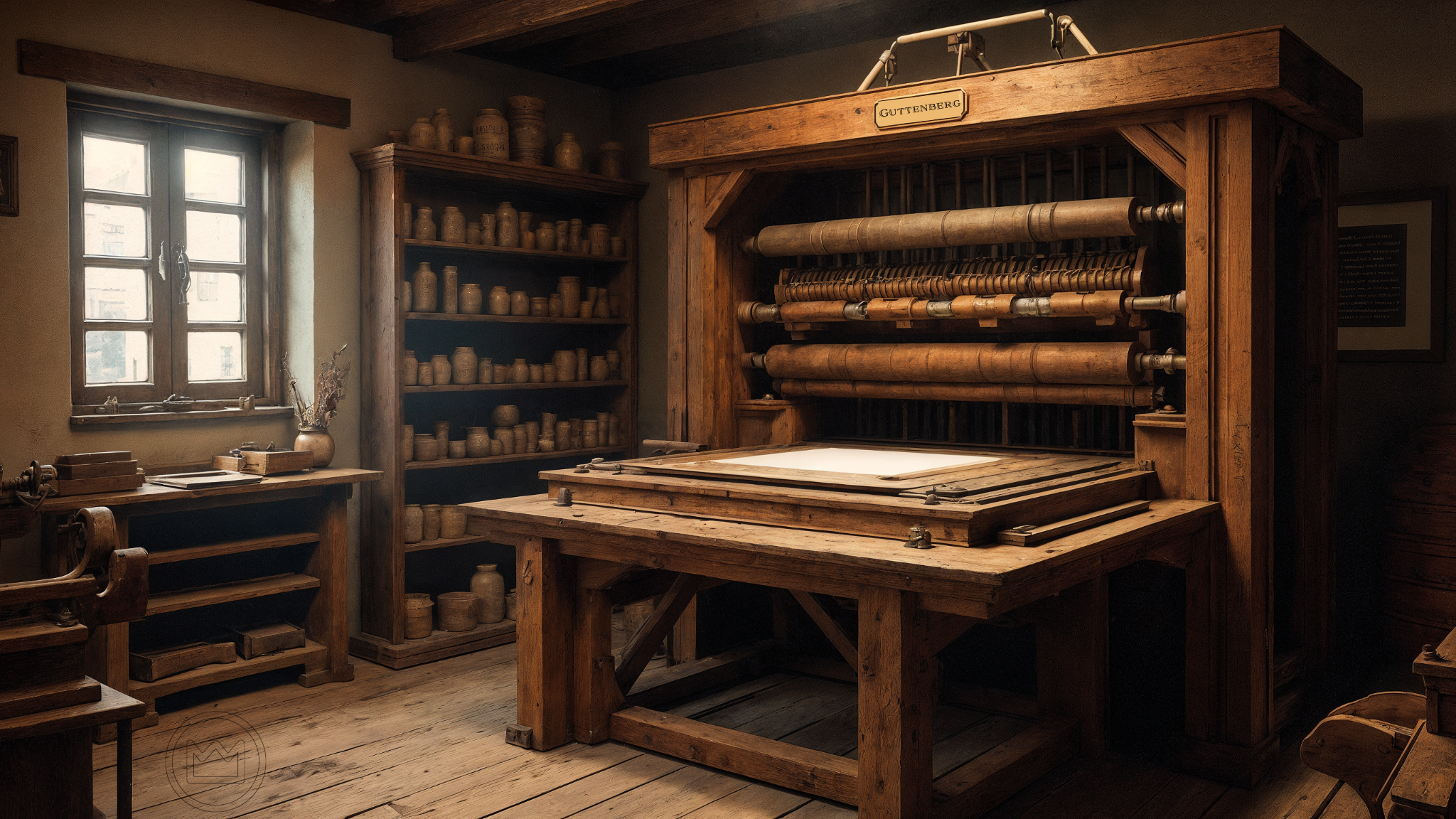Pre-Reformation Church Crisis
Crisis in the Church: When the System Broke (AD 1300-1517)
Part 9 of 12 in the Church History Series
In 1302, Pope Boniface VIII declared that submission to the pope was absolutely necessary for salvation. A year later, French soldiers slapped him in the face and held him prisoner. He died within weeks from the shock. The papal monarchy that had humbled emperors was itself humiliated, beginning two centuries of crisis that would make the Protestant Reformation inevitable.
The Babylonian Captivity of the Papacy (1309-1377)
Boniface VIII (1294-1303) was a weak pope trying to exercise strong claims. His bull Unam Sanctam (1302) made the most extreme assertion of papal power in history:
"We declare, state, and define that it is absolutely necessary for salvation that every human creature be subject to the Roman Pontiff."
But times had changed. When Boniface tried to stop King Philip IV of France from taxing clergy, Philip sent troops to arrest him. The "Outrage of Anagni" (1303) saw French soldiers physically assault the pope. Though freed by locals, Boniface died shortly after, reportedly insane from the trauma.
The Move to Avignon
Philip IV effectively controlled the next papal election. Clement V (1305-1314), a Frenchman, never even traveled to Rome. In 1309, he moved the papal court to Avignon in southern France—beginning what critics called the "Babylonian Captivity" of the papacy.
For 68 years, seven successive popes resided in Avignon:
- All were French
- All were influenced by the French crown
- All lost credibility with non-French Christians
- All increased papal taxation to fund lavish lifestyles
💰 The Avignon Papacy's Excesses
The Avignon popes built a magnificent palace requiring:
- Over 1,000 servants
- Elaborate banquets with dozens of courses
- The finest wines and entertainment
- Massive bureaucracy selling church offices
This luxury was funded by aggressive taxation and sale of indulgences. The spiritual mission was drowning in material excess.
Catherine of Siena: Conscience of the Papacy
Into this crisis stepped an unlikely reformer: Catherine of Siena (1347-1380), an illiterate woman who experienced powerful visions. She fearlessly confronted Pope Gregory XI:
"Be who God meant you to be and you will set the world on fire! Return to Rome and be the shepherd, not the wolf!"
Remarkably, Gregory listened. In 1377, he returned the papacy to Rome. But the crisis was far from over.
The Great Western Schism (1378-1417)
Gregory XI died in 1378, and the cardinals elected Urban VI. His erratic, possibly insane behavior horrified them. The same cardinals declared the election invalid and elected Clement VII, who returned to Avignon.
Now Christendom faced an impossible situation: two popes, each claiming to be Peter's successor, each excommunicating the other's followers. Europe divided along political lines:
The Great Schism Divisions
Roman Line (Urban VI): Italy, Germany, Scandinavia, England, Hungary, Poland
Avignon Line (Clement VII): France, Spain, Scotland, Sicily, Cyprus
Christians faced an agonizing question: Which pope could provide valid sacraments? Was half of Europe damned?
From Bad to Worse: Two Popes to Three
Cardinals from both sides met at the Council of Pisa (1409) to solve the crisis. They deposed both popes and elected Alexander V. But neither deposed pope accepted this decision. Christendom now had three popes, each claiming exclusive legitimacy!
The Council of Constance (1414-1418) finally resolved the crisis:
- Gregory XII (Roman line) voluntarily resigned
- John XXIII (Pisan line) was deposed
- Benedict XIII (Avignon line) was deposed, though he never accepted it
- Martin V was elected as sole pope in 1417
The Conciliar Movement: Can Councils Trump Popes?
The schism raised fundamental questions: If popes could be so wrong, who held ultimate authority? The Conciliar Movement argued that general councils, representing the whole church, stood above popes.
The Council of Constance declared:
"This holy synod... holds power immediately from Christ; and everyone of whatever state or dignity, even papal, is bound to obey it in those matters which pertain to faith, the eradication of schism, and the general reform of the Church."
But once Martin V became secure, he and his successors rejected conciliar supremacy. The Council of Basel (1431-1449) tried to assert authority but ultimately failed. Popes had learned to prevent councils that might challenge them.
Early Reformers: Voices Crying in the Wilderness
While popes fought for power, prophetic voices called for genuine reform. Three figures stand out as forerunners of the Protestant Reformation:
John Wycliffe (c. 1330-1384): The Morning Star
An Oxford professor, Wycliffe began questioning church authority during the Avignon papacy. His revolutionary ideas included:
- Scripture over Pope: The Bible, not the papacy, is the ultimate authority
- Translation rights: Common people deserve Scripture in their own language
- Corrupt clergy: Immoral priests invalidate their ministry
- Transubstantiation rejected: The bread and wine don't literally become Christ's body
- Papal claims false: The pope has no special authority from Peter
Wycliffe trained "poor preachers" (Lollards) to spread his ideas. Though condemned, he died peacefully in 1384. The Council of Constance ordered his bones exhumed and burned in 1428, throwing his ashes into the River Swift to symbolically "drown" him posthumously.
A Lollard prophecy proved true: "They burnt his bones to ashes and cast them into Swift, which conveyed them into the Avon, Avon into Severn, Severn into the narrow seas, and they into the main ocean. And thus the ashes of Wycliffe are the emblem of his doctrine, which now is dispersed all the world over."
Jan Hus (c. 1373-1415): The Martyr of Constance
A Czech priest and professor, Hus was influenced by Wycliffe's writings brought to Prague by students. He preached in Czech rather than Latin, making faith accessible to common people.
Hus's reforms focused on:
- Moral reform of clergy
- Preaching in vernacular language
- Communion in both kinds (bread AND wine) for laity
- Christ, not the pope, as head of the church
- Scripture as final authority
Summoned to the Council of Constance under promise of safe conduct from Emperor Sigismund, Hus was arrested, tried, and condemned. When ordered to recant, he replied:
"I would not for a chapel full of gold recede from the truth... I appeal to Jesus Christ, the only judge who is almighty and completely just. In his hands I place my cause."
On July 6, 1415, Hus was burned at the stake. He died singing psalms. His executioners threw his ashes into the Rhine to prevent veneration. But his death sparked the Hussite Wars—Bohemia revolted against Rome for decades.
Girolamo Savonarola (1452-1498): The Bonfire Prophet
A Dominican friar in Florence, Savonarola preached fiery sermons against corruption in both church and society. When the Medici fell from power, he effectively ruled Florence as a theocracy (1494-1498).
Savonarola's reforms included:
- Public "bonfires of vanities" burning luxury items
- Moral legislation against gambling, sodomy, and excess
- Direct attacks on Pope Alexander VI (Rodrigo Borgia)
- Prophecies of church renewal through tribulation
When he called Alexander VI "the Antichrist" and refused to stop preaching despite excommunication, Florence turned against him. Savonarola was tortured, hanged, and burned in 1498. His ashes were thrown into the Arno River.
Notice the pattern: reformers' ashes thrown into rivers, as if water could wash away their influence. Yet their ideas spread like those waters—unstoppable.
The Renaissance: New Learning, New Questions
While the church faced internal crisis, intellectual revolution was brewing. The Renaissance (1350-1650) brought:
- Humanism: "Ad fontes" (back to sources)—studying original Greek and Hebrew texts
- Critical thinking: Questioning medieval assumptions
- Individualism: Emphasis on personal achievement and expression
- Classical revival: Rediscovering pre-Christian philosophy and literature
Erasmus of Rotterdam (1466-1536) embodied Renaissance impact on Christianity. His Greek New Testament (1516) revealed errors in the Latin Vulgate. His satires like "Praise of Folly" mocked church corruption. Though remaining Catholic, Erasmus "laid the egg that Luther hatched."
The Printing Revolution
Johannes Gutenberg's printing press (c. 1440) changed everything. Before printing:
- Books were hand-copied, expensive, and rare
- Most priests didn't own Bibles
- Church controlled information flow
- Heresies spread slowly
After printing:
- Books became affordable and widespread
- Literacy rates increased
- Ideas spread rapidly
- Church lost information monopoly
📚 The Gutenberg Bible's Impact
Gutenberg's first major work was the Bible (1455). Within 50 years, more Bibles were printed than had been copied in the previous 1,000 years. When Luther posted his theses in 1517, printing presses spread them across Germany within weeks. The Reformation was the first mass movement powered by mass media.
On the Eve of Reformation
By 1517, multiple forces converged to make reformation inevitable:
Church Problems:
- Papal corruption: The warrior Pope Julius II (1503-1513) led armies personally
- Clerical ignorance: Many priests couldn't explain basic doctrine
- Financial exploitation: Indulgences sold like spiritual insurance
- Moral bankruptcy: Alexander VI's illegitimate children held church offices
- Spiritual emptiness: Ritual replaced relationship
External Pressures:
- Rising nationalism: German princes resented Italian papal taxation
- Economic changes: New merchant class questioned church wealth
- Intellectual ferment: Humanism encouraged questioning authority
- Technological revolution: Printing enabled rapid idea spread
- Ottoman threat: Turkish expansion distracted Catholic powers
Spiritual Hunger:
- Mysticism's growth: People sought direct divine connection
- Bible curiosity: Increasing desire to read Scripture personally
- Salvation anxiety: How can I be sure I'm saved?
- Reform movements: Proof that many wanted change
Lessons from the Pre-Reformation Crisis
- Institutional credibility is fragile. The papacy went from supreme power to having three competing popes within one generation. Moral authority lost is hard to regain.
- Truth will find a way. Despite executing reformers and burning their books, the institutional church couldn't stop reform ideas from spreading. Suppression often strengthens what it seeks to destroy.
- Technology changes everything. The printing press made Reformation possible. What modern technologies might transform Christianity similarly?
- Reform requires sacrifice. Wycliffe, Hus, and Savonarola paid dearly for their convictions. Comfortable Christianity rarely changes the world.
- God prepares the ground. The convergence of factors by 1517 wasn't coincidental. Providence works through historical processes.
Reflection Questions
- What current church practices might future generations view as our "Babylonian Captivity"?
- How do modern reformers compare to Wycliffe, Hus, and Savonarola in courage and clarity?
- What technological or cultural shifts today might spark reformation-level changes?

